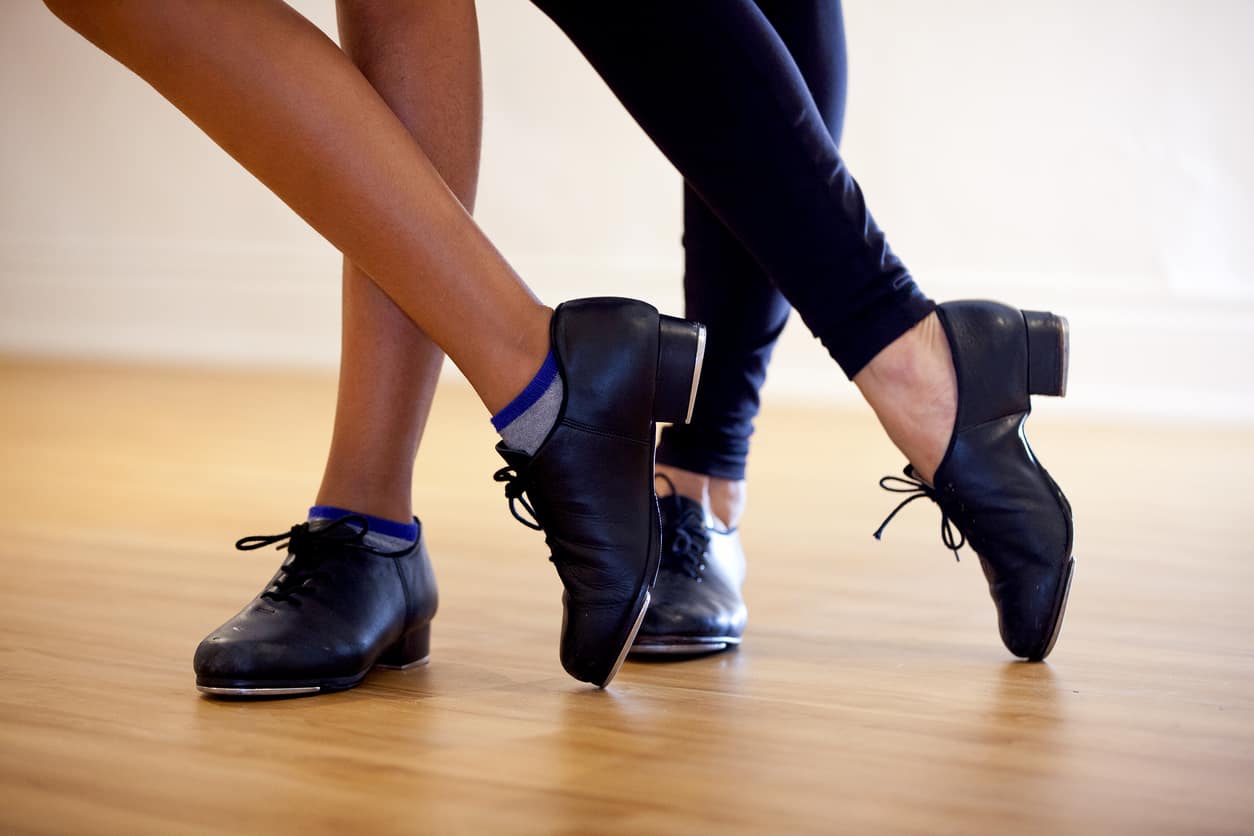
Tap dance is a captivating and rhythmic form of dance that has captivated audiences for decades. It has a rich history and a unique style that sets it apart from other dance forms. From its origins in African and Irish dance traditions to its evolution into a popular and influential art form, tap dance has left an indelible mark on the world of performing arts. In this article, we’ll explore 20 fascinating facts about tap dance, shedding light on its cultural significance, iconic performers, and enduring appeal. Whether you’re a seasoned tap enthusiast or a newcomer to the world of dance, these facts are sure to deepen your appreciation for this timeless and toe-tapping art form.
Key Takeaways:
- Tap dance is a vibrant blend of African and European dance styles, creating infectious rhythms and lively movements that captivate audiences and inspire joy and celebration.
- Tap dance serves as a platform for individual artistry and expression, conveying a wide range of emotions while fostering a sense of community and camaraderie within the dance world.
Tap Dance is a Blend of African and European Dance Styles
Tap dance is a unique and vibrant form of dance that originated in the United States during the 19th century. It is a fusion of African tribal dances and various European dance forms, including Irish step dancing, Scottish clog dancing, and English clog dancing. This blend of cultural influences is evident in the rhythmic footwork and lively movements that characterize tap dance.
It Utilizes Special Shoes with Metal Taps
One of the defining features of tap dance is the use of special shoes equipped with metal taps on the soles and heels. These taps create percussive sounds when they come into contact with the floor, allowing dancers to produce intricate rhythms and melodies with their feet. The distinct sound of the taps striking the surface is an integral aspect of tap dance performances.
Bill Robinson, Known as “Bojangles,” Was a Pioneering Tap Dancer
Bill Robinson, also known as “Bojangles,” was a trailblazing figure in the world of tap dance. He achieved widespread acclaim for his exceptional skill, creativity, and charismatic stage presence. Robinson’s influential contributions to tap dance helped popularize the art form and paved the way for future generations of dancers.
The Nicholas Brothers Were Renowned for Their Acrobatic Style of Tap Dance
Fayard and Harold Nicholas, known as the Nicholas Brothers, were celebrated for their innovative and acrobatic approach to tap dance. Their performances often featured breathtaking leaps, splits, and other gravity-defying moves, showcasing the athleticism and agility inherent in tap dance. The Nicholas Brothers left an indelible mark on the history of this art form.
Tap Dance Gained Prominence in Vaudeville Shows
During the early 20th century, tap dance became a popular feature in vaudeville performances, captivating audiences with its infectious rhythms and dynamic choreography. The lively and exuberant nature of tap dance made it a crowd-pleasing spectacle, earning it a central place in the entertainment landscape of the time.
It Experienced a Revival in the 1980s
In the 1980s, tap dance underwent a notable resurgence, propelled by a renewed interest in traditional American art forms. This revival sparked a renaissance in tap dance, leading to the emergence of innovative choreographers and the revitalization of classic tap routines. The 1989 film “Tap,” starring Gregory Hines, played a pivotal role in reigniting public enthusiasm for tap dance.
Tap Dance Incorporates Elements of Improvisation
Improvisation is an essential component of tap dance, allowing performers to express their creativity and individuality through spontaneous and unrehearsed movements. This improvisational aspect adds an element of surprise and excitement to tap dance performances, as dancers respond to the music and rhythm in real time, showcasing their improvisational prowess.
Gregory Hines Was an Iconic Figure in the Tap Dance World
Gregory Hines, renowned for his exceptional talent and charismatic stage presence, made significant contributions to the popularization of tap dance. His artistry and influential work in films, stage productions, and television helped elevate the visibility and appreciation of tap dance as a dynamic and expressive art form.
Tap Dance Can Be a Form of Percussive Music
With its rhythmic patterns and intricate footwork, tap dance transcends traditional notions of dance and can be viewed as a form of percussive music. The sounds generated by the taps on the dancers’ shoes contribute to the rich tapestry of musical elements within tap dance, blurring the lines between dance and music.
It Has Influenced Other Dance Styles
The infectious energy and rhythmic complexity of tap dance have had a profound influence on other dance genres, inspiring choreographers and dancers across various styles. Elements of tap dance, such as syncopated rhythms and intricate footwork, have been integrated into contemporary dance, jazz dance, and musical theater, leaving a lasting imprint on the broader dance landscape.
Tap Dance Can Convey a Wide Range of Emotions
Beyond its technical prowess, tap dance has the capacity to convey a diverse spectrum of emotions, from joy and exuberance to introspection and melancholy. Through nuanced movements and expressive gestures, tap dancers can communicate poignant narratives and evoke powerful emotions, transcending the boundaries of verbal language through the universal language of dance.
It Celebrates Individual Artistry and Expression
Tap dance is a platform for individual artistry and self-expression, allowing dancers to infuse their performances with personal flair and creativity. Each dancer brings a unique style and interpretation to their tap routines, contributing to the rich tapestry of diversity and innovation within the tap dance community.
Tap Dance Has a Rich Cultural Legacy
Embedded within the history of tap dance is a rich cultural legacy that reflects the diverse influences and contributions of artists from various backgrounds. This legacy encompasses the resilience and creativity of African American dancers, the traditions of European dance, and the ongoing evolution of tap dance as a dynamic and inclusive art form.
It Offers a Platform for Cross-Generational Connections
Tap dance serves as a bridge between generations, fostering connections between seasoned practitioners and emerging talents. The intergenerational exchange within the tap dance community nurtures mentorship, knowledge sharing, and the preservation of treasured techniques and choreographic innovations across different eras.
Tap Dance Can Be a Source of Empowerment and Liberation
For many individuals, tap dance serves as a source of empowerment and liberation, offering a space for self-expression, creativity, and personal empowerment. The rhythmic cadence of tap dance provides a means of reclaiming agency and celebrating the inherent strength and resilience of the human spirit through movement and sound.
It Showcases the Interplay of Tradition and Innovation
Tap dance embodies a dynamic interplay between tradition and innovation, honoring the rich heritage of classic tap routines while embracing contemporary choreographic explorations and artistic reinventions. This fusion of tradition and innovation propels tap dance into new creative frontiers, ensuring its relevance in the modern cultural landscape.
Tap Dance Can Serve as a Form of Social Commentary
Through its expressive potential, tap dance has been utilized as a medium for social commentary, addressing pertinent issues and advocating for social justice. Dancers have harnessed the communicative power of tap dance to amplify voices, convey narratives of resilience, and advocate for positive societal change.
It Fosters a Sense of Community and Camaraderie
Within the tap dance community, a spirit of camaraderie and mutual support thrives, creating a vibrant and inclusive environment for dancers to connect, collaborate, and celebrate their shared passion for the art form. This sense of community fosters a supportive network that nurtures artistic growth and collective solidarity.
Tap Dance Continues to Evolve and Adapt
As a living art form, tap dance continues to evolve and adapt, embracing new influences, technologies, and creative possibilities. Contemporary tap choreographers and dancers are pushing the boundaries of traditional tap dance, exploring innovative fusions with diverse genres and pioneering groundbreaking artistic expressions.
It Inspires Joy and Celebration
Above all, tap dance inspires joy, celebration, and a sense of collective upliftment. The infectious rhythms, spirited movements, and jubilant energy inherent in tap dance performances resonate with audiences, sparking moments of shared delight and reaffirming the enduring power of dance to unite and uplift communities.
Conclusion
Tap dance is a vibrant and captivating art form that has captivated audiences for generations. From its rich history to its influence on popular culture, tap dance continues to inspire and entertain people around the world. Whether you’re a seasoned tap dancer or simply a fan of the art, there’s always something new to learn and appreciate about this rhythmic and expressive dance style. With its unique blend of tradition and innovation, tap dance is sure to remain a beloved form of artistic expression for years to come.
FAQs
What is the history of tap dance?
Tap dance has its roots in African and Irish dance traditions, blending together to create a unique form of rhythmic expression that has evolved over centuries.
What are the essential elements of tap dance?
Key elements of tap dance include rhythm, timing, coordination, and the use of specialized tap shoes to create percussive sounds.
Is tap dance difficult to learn?
While mastering tap dance requires dedication and practice, anyone can learn the basics and enjoy the rhythmic experience of tap dancing.
How has tap dance influenced popular culture?
Tap dance has had a significant impact on various forms of entertainment, including film, television, and musical theater, influencing choreography and inspiring audiences worldwide.
What are some famous tap dancers and performances?
Legendary tap dancers such as Fred Astaire, Ginger Rogers, and Savion Glover, as well as iconic performances like “Singin’ in the Rain,” have left an indelible mark on the history of tap dance.
Tap dance enthusiasts and curious readers alike can expand their knowledge by exploring additional captivating facts. Delightful tidbits about this percussive art form await, from the intricacies of tap dancing techniques to the significance of National Tap Dance Day. For those intrigued by the lives of iconic tap dancers, an in-depth look at the extraordinary accomplishments of Gregory Hines promises to inspire and amaze.
Was this page helpful?
Our commitment to delivering trustworthy and engaging content is at the heart of what we do. Each fact on our site is contributed by real users like you, bringing a wealth of diverse insights and information. To ensure the highest standards of accuracy and reliability, our dedicated editors meticulously review each submission. This process guarantees that the facts we share are not only fascinating but also credible. Trust in our commitment to quality and authenticity as you explore and learn with us.


